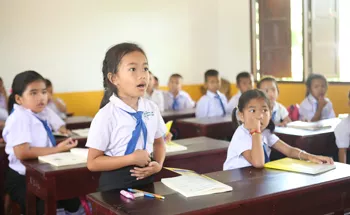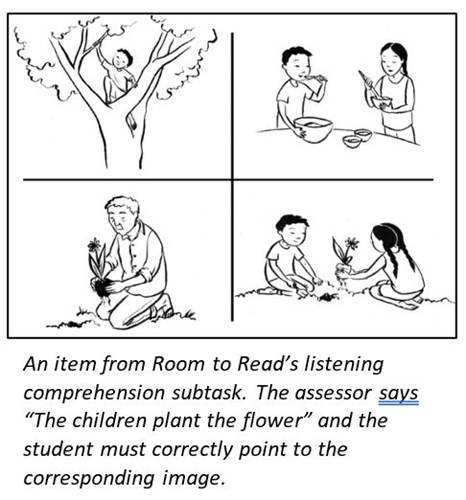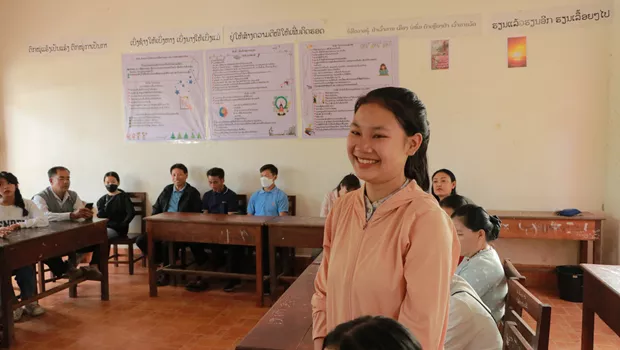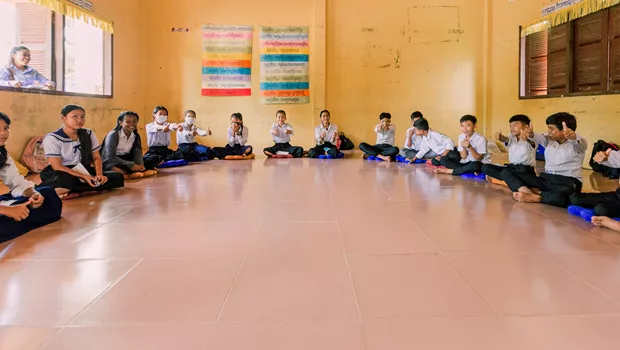
Think back to your first day of school. Maybe you remember your new teacher welcoming you as you walked through the door, your new classmates asking you about your summer, or the excitement of opening up a crisp new textbook!
Yet, for the hundreds of millions [1] of students across the world who do not have access to education in a language they speak or understand, memories of the first day of school are more than likely filled with uncertainty and intimidation. Wouldn’t it be overwhelming if you couldn’t understand your teacher’s greeting or your classmates’ questions? Or, imagine the feeling of confusion as you open up your new textbook only to find it full of strange squiggles and shapes you’ve never seen before.
For many of these students, the problems don’t just stop after the first day of school. International research has found that students who do not speak the language used at school are at a much greater risk of falling on the wrong side of an often-insurmountable learning gap [2]. Given this greater risk, it is imperative that literacy interventions are responsive to linguistic contexts and the language-learning needs of students. Oral language assessments can serve as a valuable resource to help education programmers understand these needs and take an informed approach to intervention design.
Realizing this, Room to Read has pioneered the development of an early grade Oral Language Assessment. Room to Read’s Oral Language Assessment contains 3 picture-based tasks designed to assess students’ receptive vocabulary (words we can understand, even if we can’t produce them), expressive vocabulary (words that we can produce through speaking or writing), and listening comprehension. Using a picture-based assessment allows for easy and reliable test administration, while still providing researchers with critical insight into students’ language skills.
Language Assessment. Room to Read’s Oral Language Assessment contains 3 picture-based tasks designed to assess students’ receptive vocabulary (words we can understand, even if we can’t produce them), expressive vocabulary (words that we can produce through speaking or writing), and listening comprehension. Using a picture-based assessment allows for easy and reliable test administration, while still providing researchers with critical insight into students’ language skills.
To date, Room to Read and its partners have administered this assessment in Laos and Myanmar to better understand the learning needs of students who do not speak the language used at school. Assessment results from Laos have shown that Lao language learners strongly benefit from explicit oral language instruction (such as Room to Read’s Oral Language Intervention), as students who received this instruction demonstrated significant improvements in language and reading development over time. Room to Read has used these positive results to highlight the importance of oral language support to the Laos Ministry of Education and Sports. As a result, Room to Read, the Ministry, and additional partners have collaborated under a USAID grant to build a national-level oral language support program for pre-primary, Grade 1, and Grade 2 students.
1. If you don’t understand, how can you learn? (2016). UNESCO.
2. In Laos for example, students who do not speak the Lao language are substantially more likely to struggle with reading comprehension. See page 28 in Reducing Early Grade Drop Out and Low Learning Achievement in Lao PDR. (2016). The World Bank for more information.




